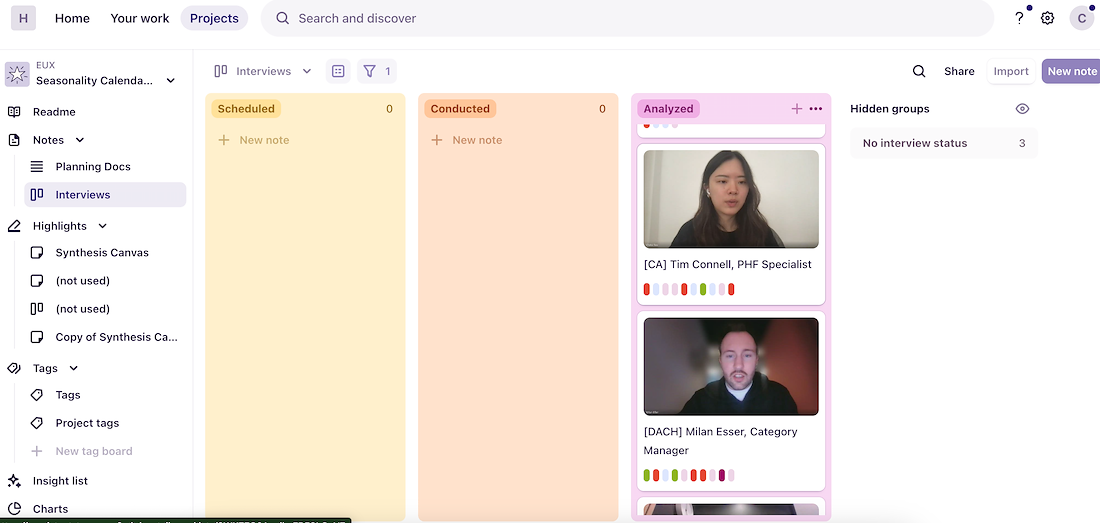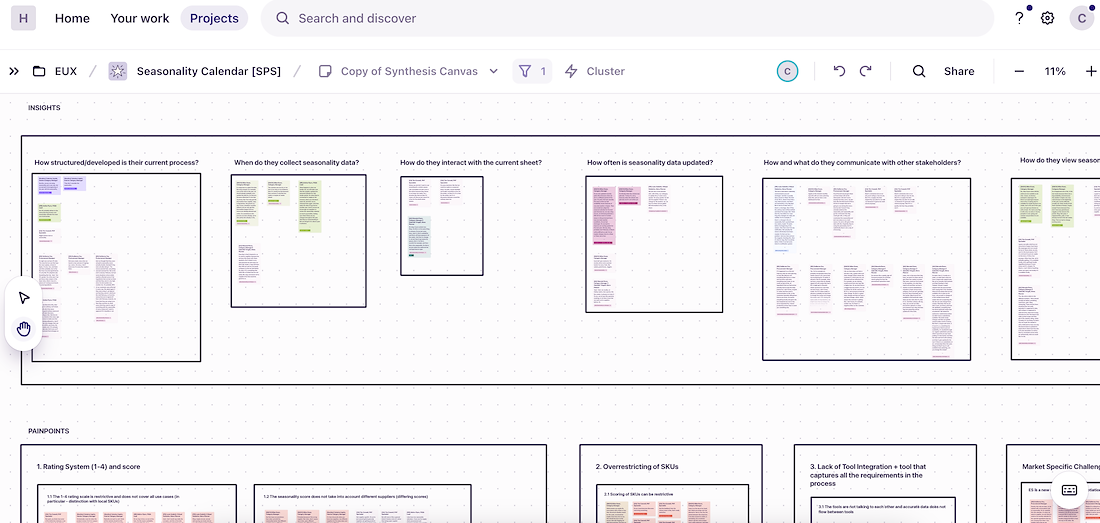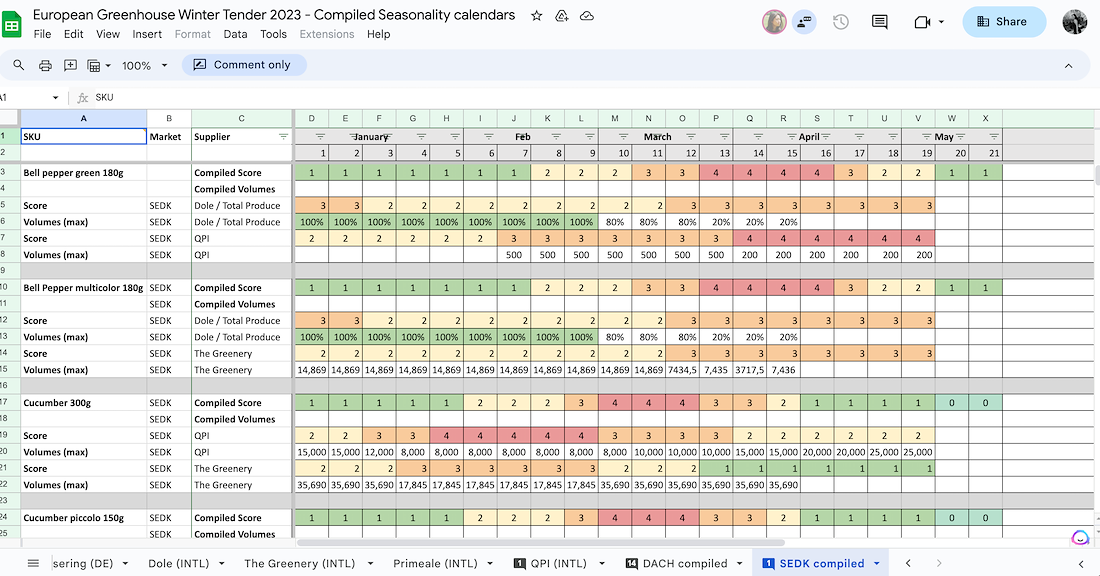— DATE
Jan 2024 – Present
(Ongoing Project)
— ACTIVITIES & TOOLS
UX Discovery & Research
UX Strategy
Service Blueprint
Service Design
Cross-alliance & tribe stakeholder management
Wireframing (Figma)
Prototyping
User Testing
— ROLE
Lead Product Designer
(+ 1 freelance Visual Designer)
Context & Problem Space
Whilst menus are planned weeks in advance, there are many manual adjustments to planned recipes due to the unavailability of SKUs. The UK market, for instance, had around 60 last minute SKU changes/week post menu publishing.
The lack of seasonality data on our Procurement tools – including key metrics like insights on crop yield, and volume caps on suppliers meant that menu planners are planning recipes with SKUs that are not most effectively optimised for its availability.
As a result, Hellofresh end customers end up not receiving accurate items in their orders. Up till June 2023, complaints reports show that 74% of the customers report that they either have a missing or incorrect SKUs in their boxes.
Initial Pre-Discovery
Initial Pre-
Discovery
Prior to embarking on the project, an initial pre-discovery was conducted across all the International markets to understand their current process around ingredient seasonality and to identify Insights, Painpoints and Opportunities. Our goal was to better understand the problem space, identify our key user groups and gain clarity on where we should prioritise our research discovery efforts.
User
Insights
From these interviews, we identified three major focus areas and painpoints:
1) Automation and accurate data flow across the internal tools is key for Seasonality data to be utilised and optimised – the tools are currently not integrated.
2) Entire end-to-end process of managing an Ingredient’s seasonality by the Category managers was extremely manual and involved multiple google sheets.
3) Inaccuracy of the current rating system for seasonality meant that there is a subjective and arbitrary number that each Category manager places for an Ingredient. Missing data points like Volume caps is key to decision making that is not accurately represented and captured.
How might we enable procurement managers to collect, view and share accurate seasonality availability with recipe developers and menu planners so that more accurate menu planning and recipe decisions can be made?
Scope
Definition
I facilitated a prioritisation workshops with product and engineering counterparts to align on our vision and define the scope across three key phases.
Phase 1 (2024) – SKU Seasonality Configurator & Risk Indicator
- Roll out the MVP key functionality of collecting, viewing and sharing seasonality data with recipe developers & menu planners for one primary category (PHF – Produce, Herbs, Fruits).
Phase 2 (2025) – Sourcing Insights for Cost and Menu Optimisation
- Enable functionality to all other categories, supplier relationship platforms
Phase 3 (2026 and beyond) – Automated Sourcing Recommendation engine
- Support creation of seasonal menus that promote the use of local produce which is preferred by customers
From there, I also worked alongside product to define the possible outcomes and metrics of this project.

User Research
Kicking off Research Phase l
From our initial pre-discovery, we were able to craft more targeted questions around the problem space, and delve deeper into our key user’s biggest painpoints.
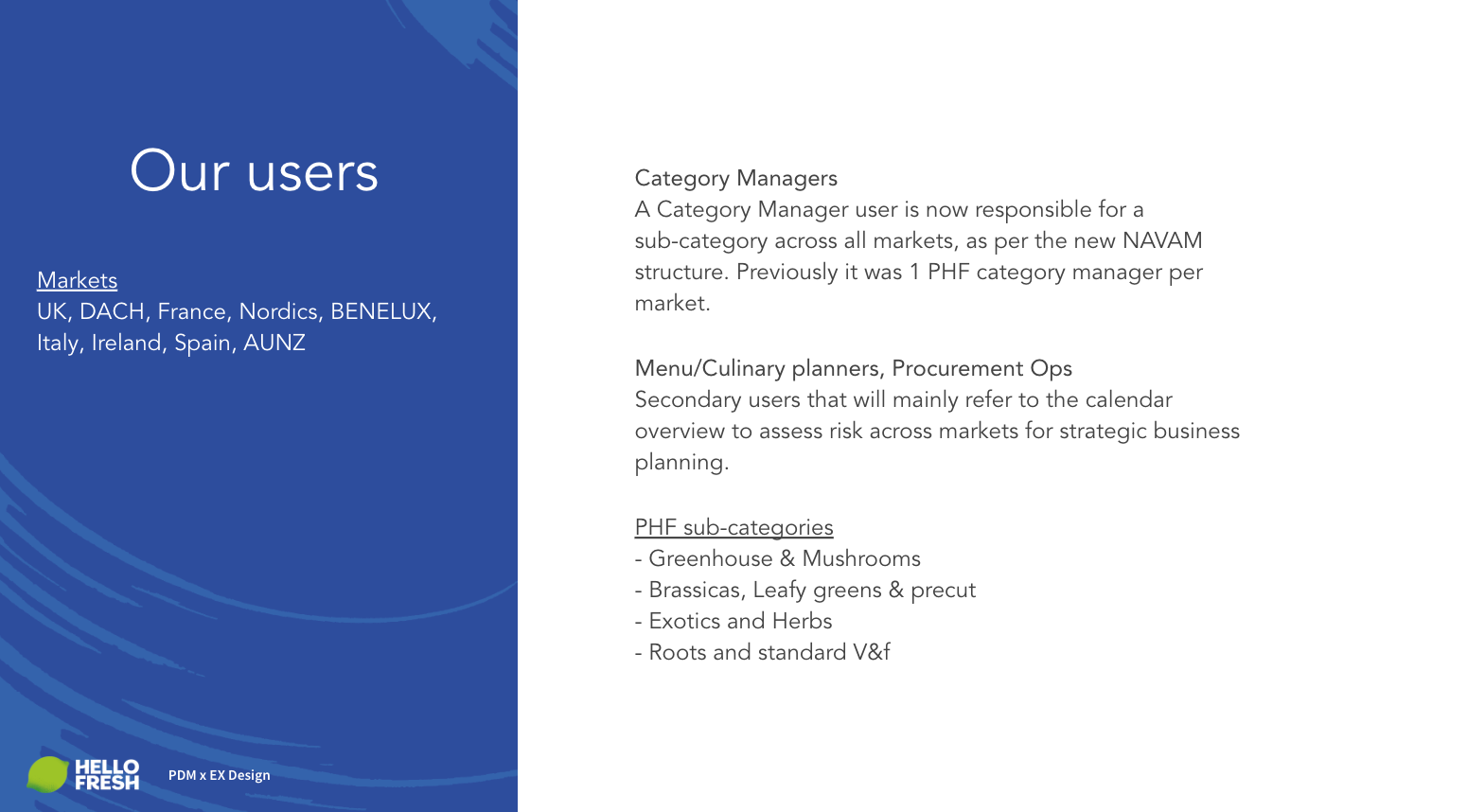
How is the category manager's current end-to-end process for managing seasonality data like?

Extremely manual and time consuming process. We also identified steps where we could automate.
A recap on the problem areas…
1) Lack of automation + data flow leads to workarounds and a poor user experience
2) CSKU seasonality update process is manual, time-consuming filled and very prone to errors. Users have to compile and check active CSKU statuses to generate templates per supplier. Multiple separate google sheets leads to higher chance of errors
3) Limited functionality affects usability and makes it hard to complete tasks
- No view per subcategory, no support to handle volume constraints
- Missing: defined processes multi-supply scores, historical scoring data
/background(fff)/1920x703.jpeg?auto=webp)
Facilitated tech and service blueprint workshops with product and tech stakeholders to envision a future end-to-end process where manual processes are automated and data flows seamlessly across all our internal tools.

After defining the future to-be state, we broke the process down to there main touch points.
1) Calendar Overview, 2) Supplier Score Setup and
3) Supplier Score Summary
Supplier Score Setup
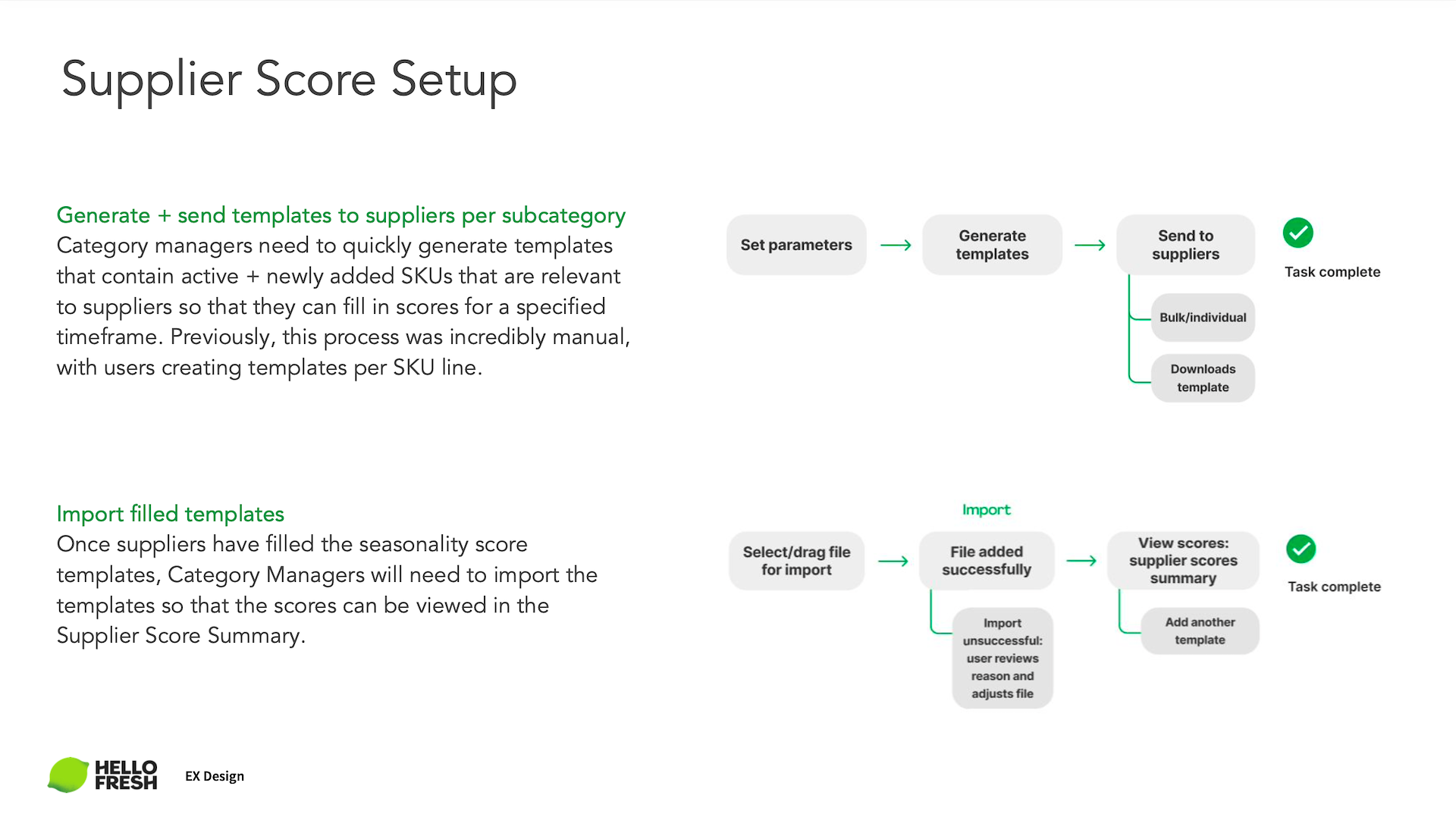
For each touchpoint, we looked at the key user tasks and flows that needed to be completed.
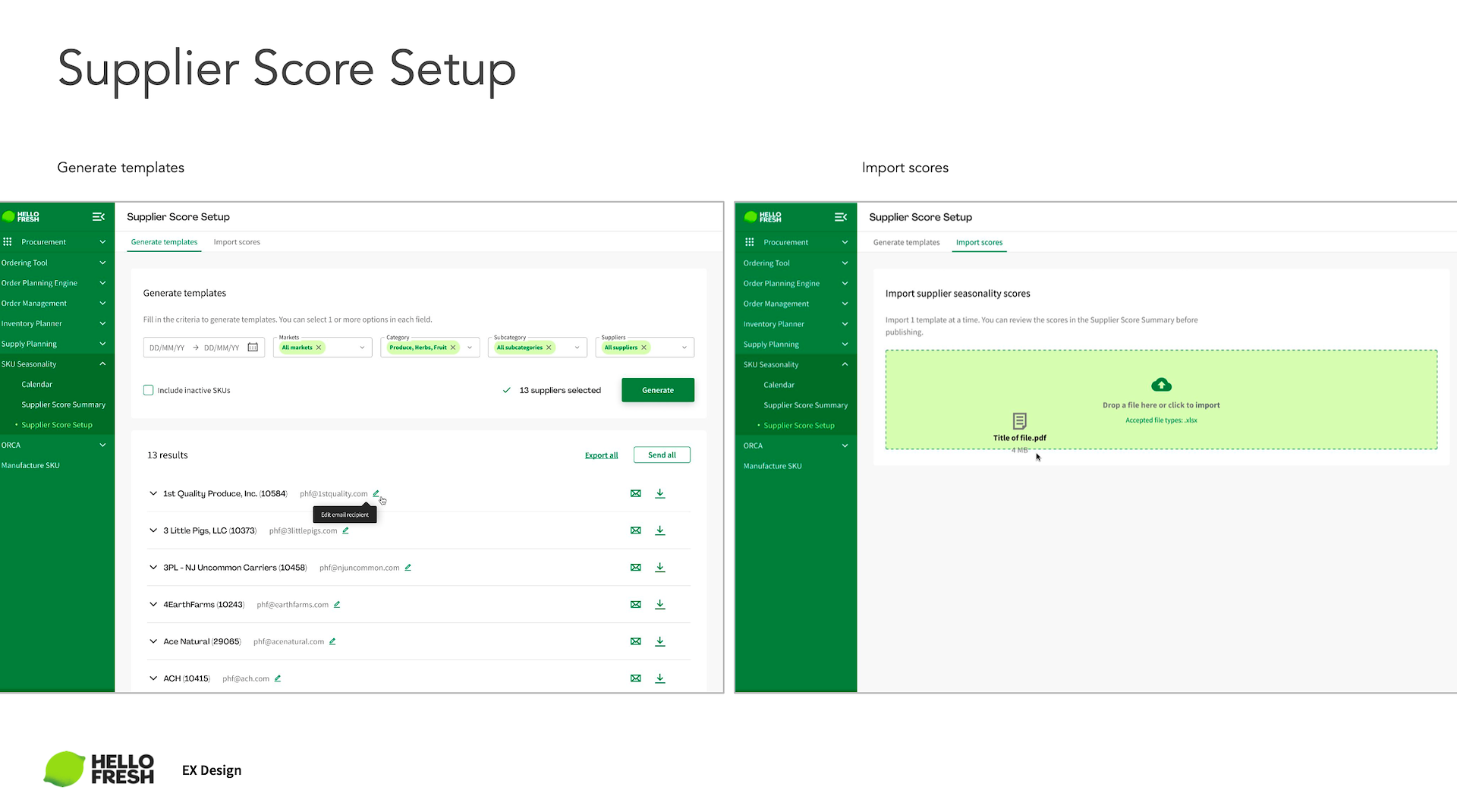
Initial screens (V1)
Supplier Score Summary
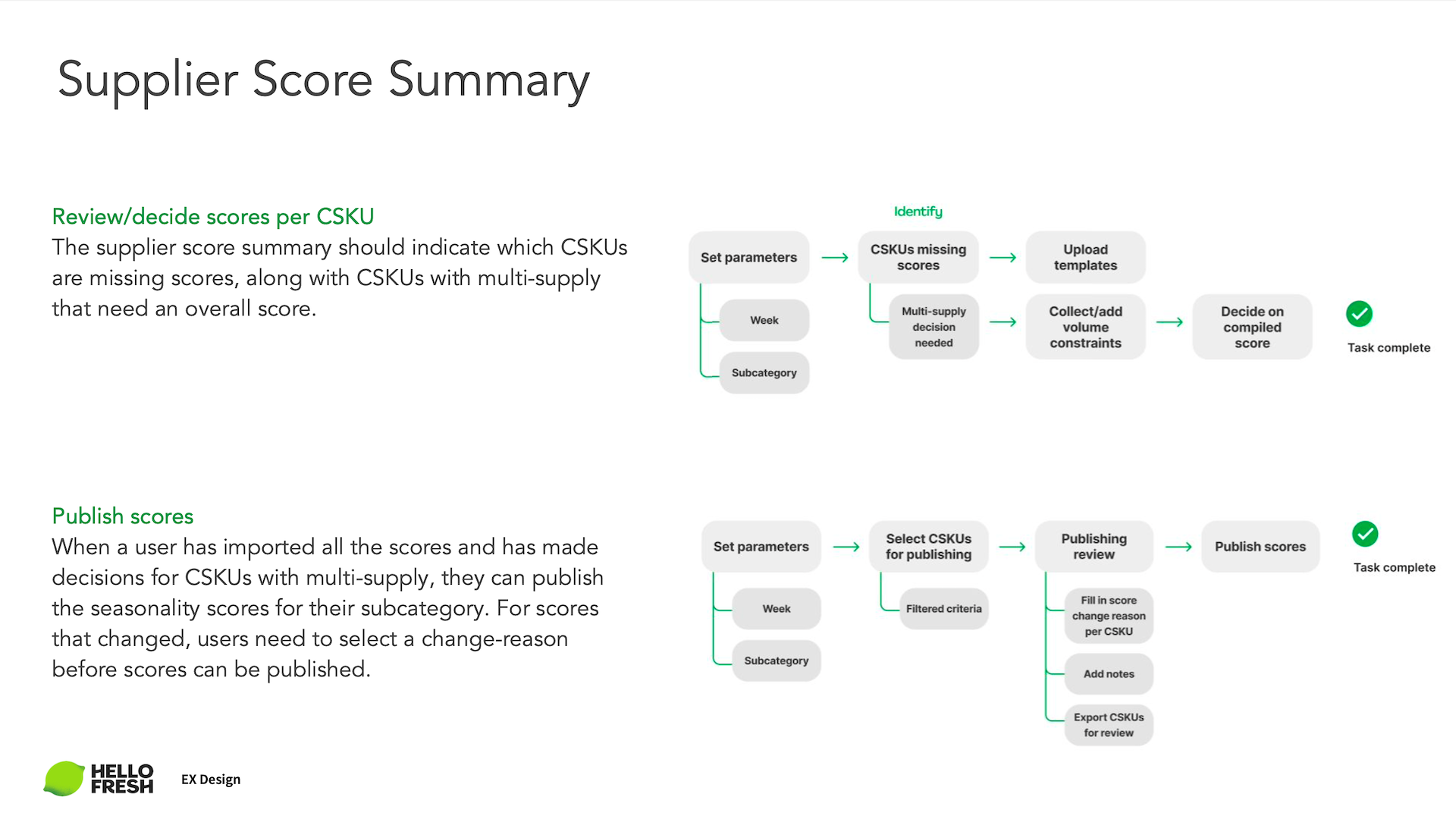
For each touchpoint, we looked at the key user tasks and flows that needed to be completed.
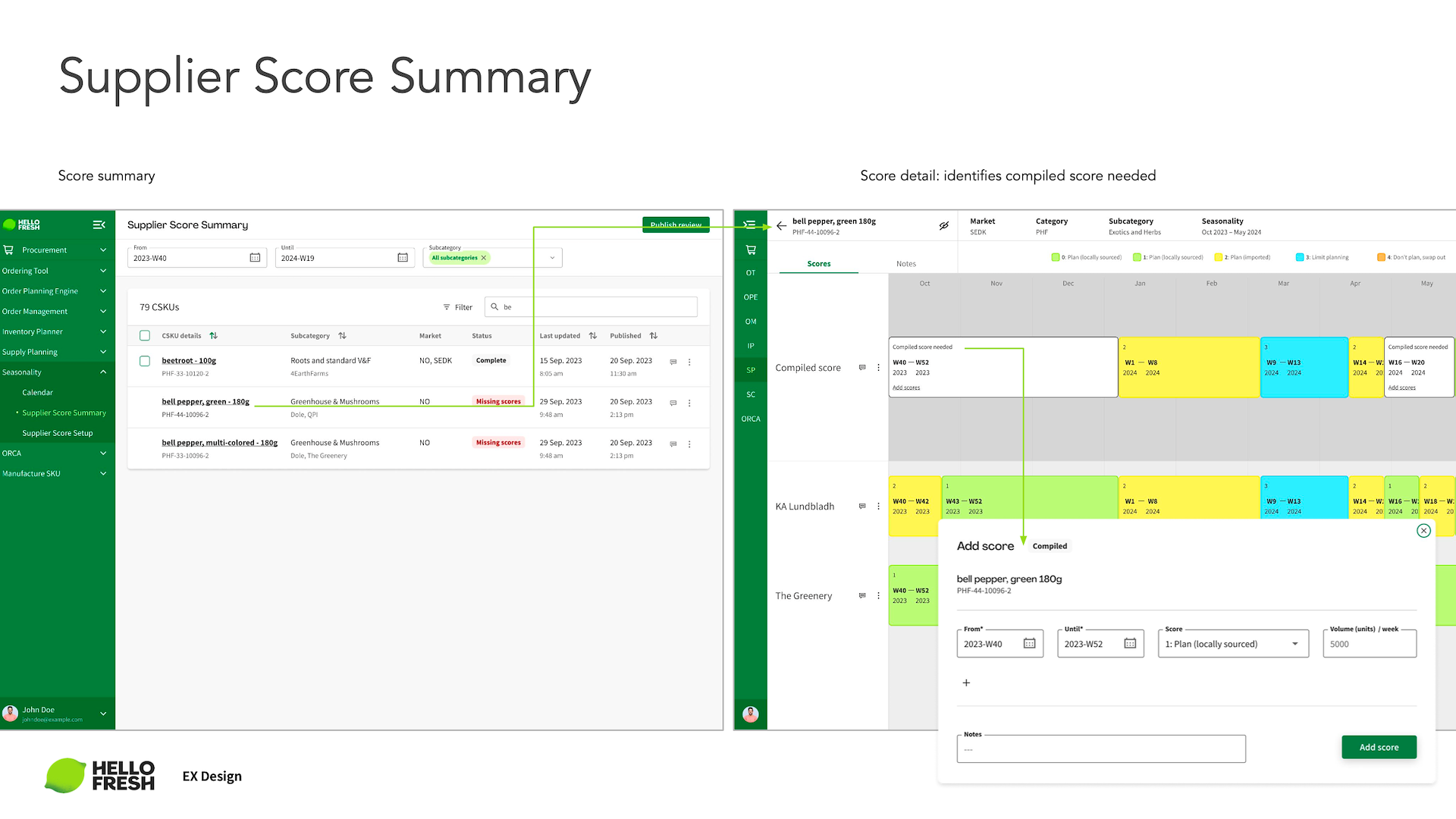
Initial screens (V1)

Initial screens (V1)
Calendar Overview

Next Steps (To be updated!)
Usability
Testing
In our next phase, we plan to test the functionality and content of the tool with a Figma prototype. We will look to conduct user testing sessions with SKU strategic managers and menu planners.
Following that, we will work on the design iterations from the user insights, collaborate closely with UXW, perform internal design QA, and facilitate handover to engineers.
